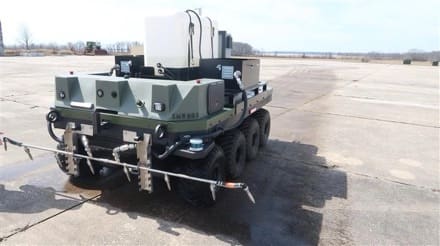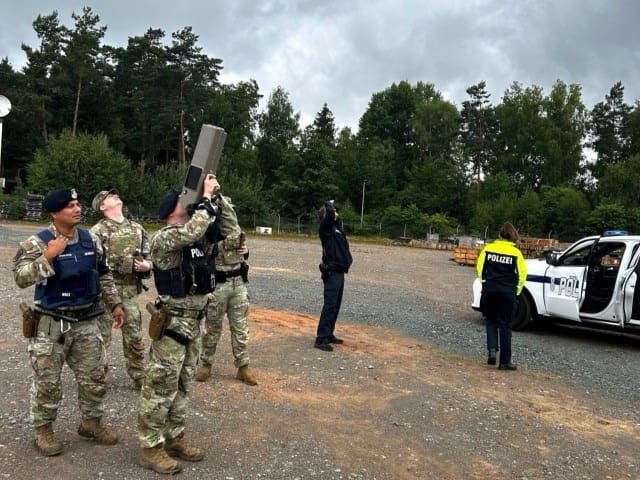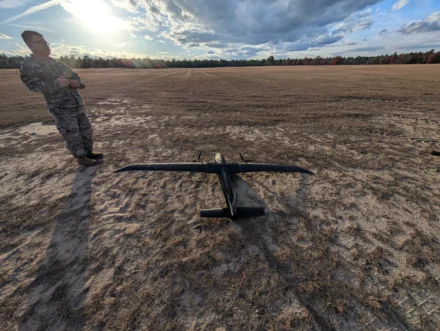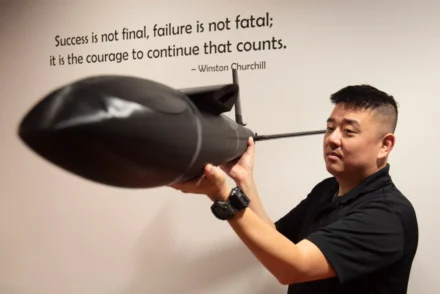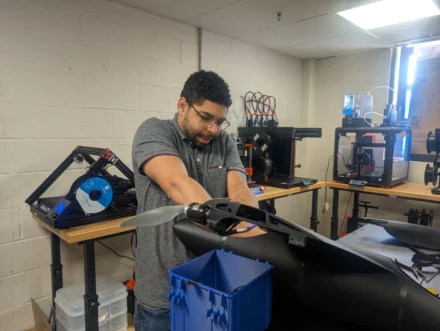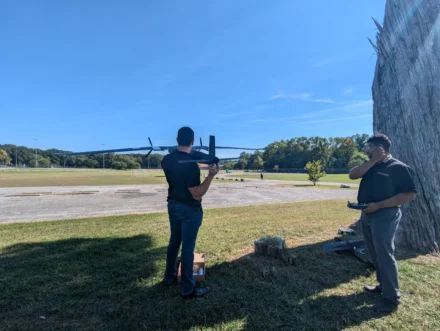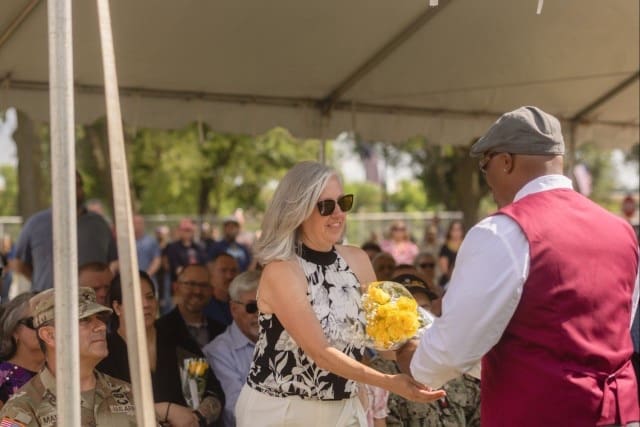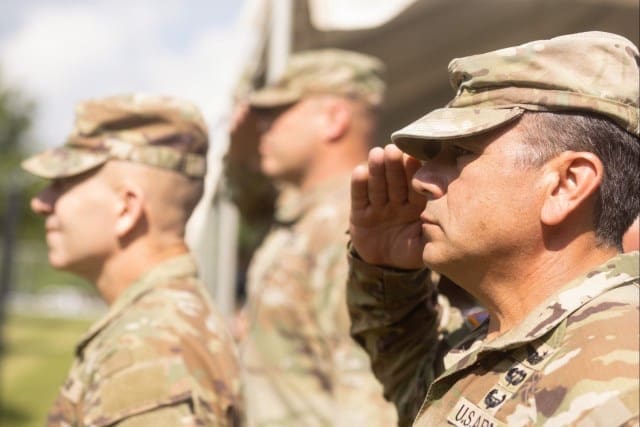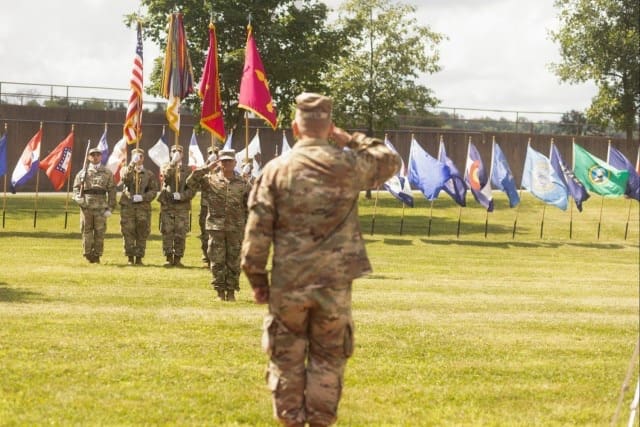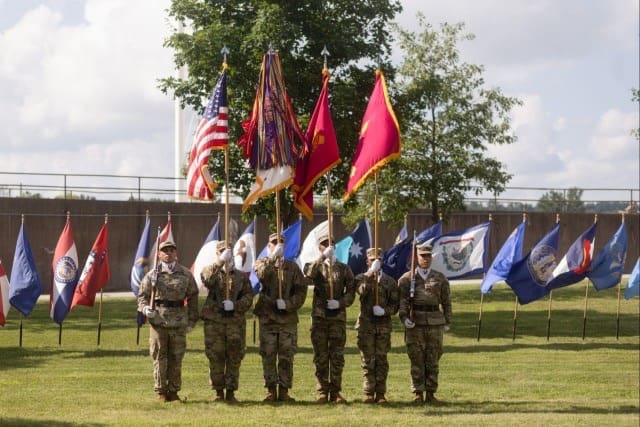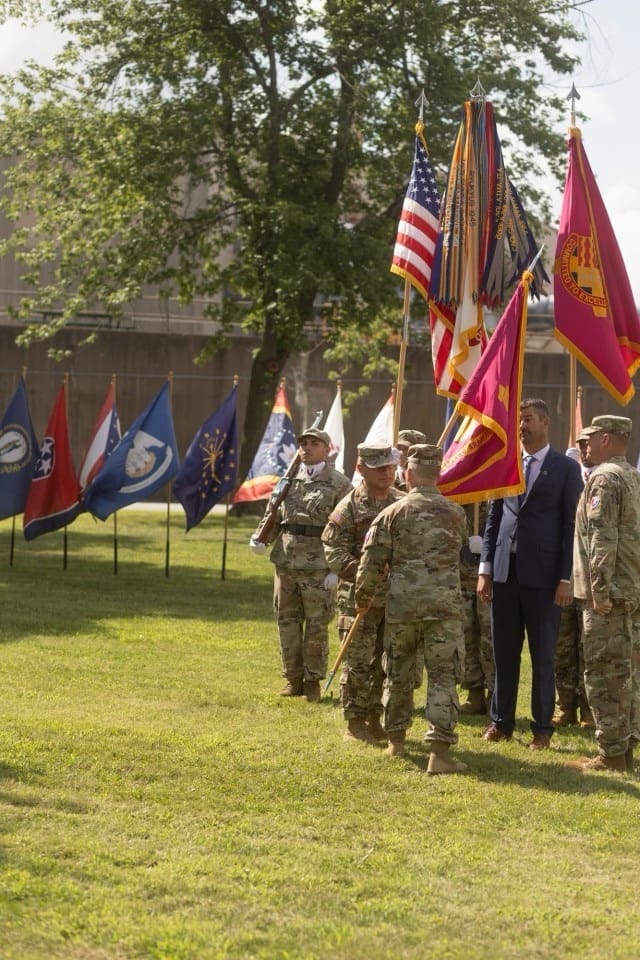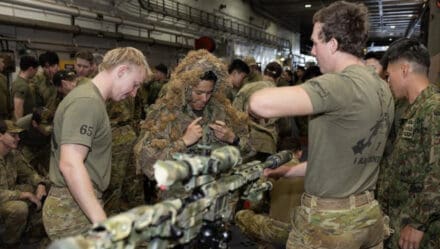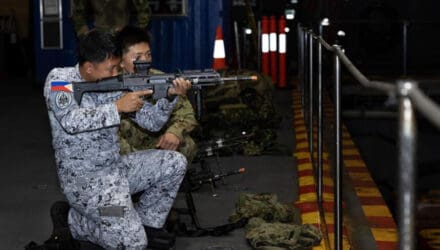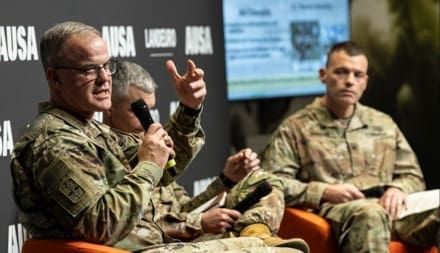
WIESBADN, Germany – At the inaugural LANDEURO conference, U.S. Army leaders from the 1st Armored Division and 1st Armored Brigade Combat Team, 3rd Infantry Division laid out a path for transforming America’s armored forces in an era defined by pervasive surveillance, lethal drones and rapidly evolving precision strike capabilities.
On July 17, during a Warrior Corner panel titled “Reforging the Armored Spearhead: TiC 2.0 and the Evolution of Large-Scale Combat Operations”, Maj. Gen. Curtis Taylor and Command Sgt. Maj. James Light, command team of the 1st AD, and Col. Bryan Bonnema, commander of the 1st ABCT, 3rd ID, delivered an assessment of the changing battlefield and how U.S. armored formations must evolve to win future wars.
Taylor opened the panel by citing a watershed moment: a Ukrainian brigade’s fully robotic assault north of Kharkiv.
“That battle indicates the time to reimagine armor has begun and we have got to think about what armor will look like in the future,” he said.
According to Taylor, the war in Ukraine is proving that increased precision strike capabilities, lethality being cheaper than protection—especially from First-Person View drones—and the pervasiveness of surveillance are reshaping combat. Over 70% of vehicle losses in Ukraine have come from FPV drone strikes.
These trends mean our future fights won’t be defined by direct fire alone, but by platforms that can sense, survive, and strike first in a contested electromagnetic spectrum.
Four Core Imperatives for the Future ABCT
From these battlefield lessons, Taylor laid out four key takeaways required to shape the Army’s evolving concept for the ABCT:
1. Sense and Strike Integration at All Echelons. From platoon to brigade, formations must have persistent sensing and strike capabilities, from short-range FPVs to long-range ISR.
2. Layered Drone Countermeasures. Units must organically embed counter-UAS capabilities, transforming into something akin to carrier strike groups with their own protective systems.
3. Embedded EW Capabilities. Formations need robust EW teams capable of operating independently, targeting enemy systems, and navigating the electromagnetic spectrum effectively.
4. Robotic Breaching. Future assaults on entrenched defenses will depend on unmanned breaching systems, inspired by the challenges seen in Ukraine’s assaults on Russian defensive lines.
Despite advances in robotics and automation, Taylor underscored a core truth, even in high-tech battles, humans are still required to hold ground. Soldiers are not attritable assets, and the Army must invest in protecting and sustaining troops in these new operational environments.
Before passing the discussion to Light, he shared a comment from an Estonian battalion commander he thought was profound, “He said the winning side in the next war will be the army that first perfects the use of drones in maneuver warfare.”
NCO Perspective: Innovation Starts at Ground Level
Light echoed that message, emphasizing that the current generation of armored Soldiers is highly capable—but must evolve.
“Our infantry squads and armored formations are very well trained and they are very good at what they do,” Light said. “The problem is we’ve been doing it pretty much the same way for the last decade or so.”
The key to transformation, he argued, is empowering Soldiers and noncommissioned officers to innovate within their current means. He called it innovation by requirement in a resource-conscious environment.
“They absolutely are the ones that are going to be able to contribute the most and influence those outcomes that determine where we go in the future as a force,” he said.
He also emphasized training discipline, citing the U.S. tank crew that won the Strong Europe Tank Challenge by focusing on fundamentals and standard gunnery—a reflection of how strong basics still dominate the battlefield.
TiC 2.0: Experimentation at Scale
Bonnema, whose brigade recently completed the first Transforming in Contact 2.0 rotation at the Joint Multinational Readiness Center, Hohenfels, Germany, provided a detailed look at how his brigade is integrating technology, Soldier ingenuity, and new tactics to meet modern threats.
“As a TiC 2.0 ABCT, there were three things that we thought that we needed to be able to do better than a non-TiC ABCT,” he stressed. “The first was accomplish our mission, task and purpose more effectively, more efficiently. The second was to maintain more and constant pressure on the enemy through multiple forms of contact and all domains. And the last was to become more lethal. So, increase that kill ratio as opposed to non-TIC ABCT.”
Some key initiatives from the ABCT’s rotation at the Joint Multinational Readiness Center:
1. Command and Control Redesign. The brigade leveraged basic camouflage and security, virtual collaboration, and emerging communications technology to enhance decision-making while avoiding detection.
2. Maneuvering in Electromagnetic Warfare Spectrum. Small EW teams were deployed forward to locate, sense, and target to disrupt enemy formations and shape conditions for the next close fight.
3. New Task Organization. The formation task organized for purpose, creating FAAT teams—combining FPV drone pilots, artillery forward observers, and anti-tank personnel—employing them in restrictive terrain to deadly effect.
4. Comprehensive Counter-UAS Defense. Throughout the exercise leaders emphasized the need for persistent UAS defense from breach point to support area, enabling safe maneuver for both sensors and troops.
“JMRC is an opportune place for us to operate, train and experiment,” Bonnema said. “It really helped us get after readiness. From the complex terrain to the professional OPFOR, it gave us some good lessons.”
Challenges Ahead: Battery Life, Training, and Launch Concepts
Despite progress, Bonnema and Taylor acknowledged hurdles. Battery limitations, inconsistent environmental performance, and the dangerous logistics of hand-launched FPVs remain issues.
A critical future requirement, Taylor said, is deploying drones from under armor.
“We’ve got to move beyond launching drones from tough boxes in dangerous forward areas,” he noted, calling on industry to help deliver solutions like vehicle-integrated launch systems.
With no formal FPV operator military occupational specialty, U.S. Army units are adapting UAS (15-series) operators and cavalry scouts for these roles. Simulators are being used for early training, and Soldiers are logging hundreds of flight hours to reach proficiency.
Light called FPV drone piloting extremely difficult, noting that mastery takes time and dedicated talent.
“You don’t just wake up, grab your controller, and go fly up and take out a tank,” he said.
Bonnema also emphasized the training proficiency required for FPV operators, “We’re using simulations to get after training, conducting hundreds of simulated missions before we get into live. And then once we get into the live training progression in our tables, it’s hundreds. Six hundred and sixty [hours] is what we’ve flown so far in preparation for our live fire.”
Europe: A Catalyst for Innovation
Taylor closed by highlighting how being deployed to Europe, so close to conflict, has supercharged innovation for the division.
“You have an opportunity because of your proximity to the theater, because the energy that is here in the NATO Alliance to innovate at a pace that I never thought was possible,” he said.
The division will return home, he said, better trained and more prepared to adapt to the changing character of war.
As the U.S. Army confronts a future battlefield dominated by drones, sensors, and electronic warfare, the 1st Armored Division and 1st Armored Brigade Combat Team, 3rd Infantry Division are leading the charge to modernize America’s armored spearhead. Their message is clear: the time to adapt is now—and the Soldier remains central to victory.
The 1st Armored Division and 1 Armored Brigade Combat Team, 3rd Infantry Division are forward-deployed to the European theater, working alongside NATO allies and regional security partners to provide combat-credible forces to V Corps, America’s forward deployed corps in Europe.
By Lt. Col. Jessica Rovero
